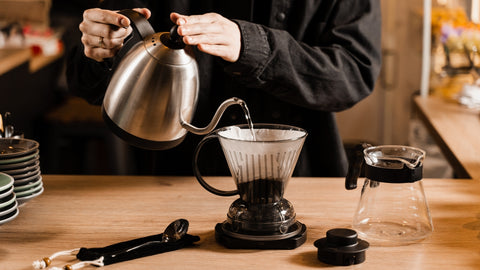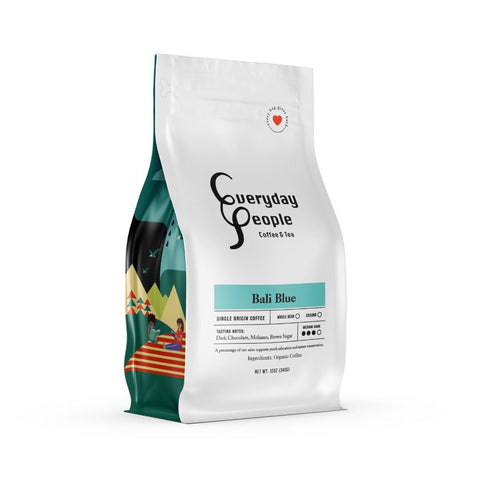Coffee is more than just a morning pick-me-up—it's a complex beverage with layers of flavor waiting to be discovered. Whether you're sipping a simple cup of drip coffee or exploring specialty single-origin beans, learning how to properly taste coffee can transform your daily ritual into a sensory adventure.
If you've ever wondered why coffee professionals talk about "notes of chocolate and citrus" or felt intimidated by coffee shop menus filled with descriptive terms, this guide will help you develop your palate and appreciate the nuanced world of coffee flavors.
Understanding Coffee's Complex Flavor Profile
Coffee contains over 800 aromatic compounds, making it one of the most complex beverages we consume. These compounds develop during the roasting process and are extracted when we brew the coffee, creating the flavors and aromas we experience in our cup.
The journey from coffee cherry to cup involves multiple stages that influence taste: the origin and varietal of the bean, processing methods, roasting techniques, and brewing parameters. Each step contributes to the final flavor profile, which is why two cups of coffee can taste dramatically different even when prepared with similar methods.
The Five Elements of Coffee Tasting
Professional coffee tasters evaluate coffee based on five key characteristics:
Aroma refers to the fragrance of both dry coffee grounds and brewed coffee. This is often the first indicator of a coffee's quality and character. Take time to smell your coffee before drinking—you'll often detect notes that complement what you taste.
Flavor encompasses the overall taste experience, including the primary flavors (sweet, sour, bitter, salty) and secondary flavor notes. Common descriptors include fruity, nutty, chocolaty, floral, or spicy.
Body describes the weight and texture of coffee in your mouth. Some coffees feel light and tea-like, while others are full-bodied and syrupy. The body is influenced by brewing method, grind size, and bean origin.
Acidity in coffee doesn't refer to pH levels but rather to the bright, lively sensation you feel on your tongue. Good acidity provides liveliness and complexity, with descriptions ranging from wine-like to citrusy.
Finish or aftertaste is the flavor that lingers after you swallow. A pleasant finish can extend the coffee experience, while undesirable aftertastes might indicate brewing issues or poor-quality beans.
Setting Up Your Coffee Tasting Session
To properly taste coffee, you'll need the right environment and setup. Choose a quiet space free from strong odors, as smell plays a crucial role in taste perception. Natural lighting is preferable, allowing you to observe the coffee's color and clarity.
Gather your materials: freshly roasted coffee beans, a reliable grinder, brewing equipment (such as a French press or pour-over dripper), a scale, timer, and tasting spoons. Having multiple small cups allows you to compare different coffees side by side.
Water quality significantly impacts coffee taste, so use filtered water heated to 195-205°F (90-96°C). The coffee-to-water ratio should be approximately 1:15 to 1:17, though you can adjust based on preference and brewing method.
The Step-by-Step Coffee Tasting Process
Start by evaluating the dry aroma. Grind your coffee and immediately smell the grounds. Note any immediate impressions—do you detect fruity, floral, nutty, or earthy scents? These initial aromatics often provide clues about the coffee's flavor profile.
Next, prepare your coffee using your chosen brewing method. As the coffee brews, pay attention to the wet aroma rising from the brewing vessel. This often differs from the dry aroma and may reveal additional complexity.
Once brewed, observe the coffee's appearance. Note the color, which can range from light brown to deep amber, and check for clarity or cloudiness. While appearance doesn't directly indicate taste, it can provide insights into roast level and brewing extraction.
Now comes the actual tasting. Take a small sip and let the coffee coat your entire palate. Professional tasters often slurp coffee to aerate it, distributing flavors throughout the mouth and enhancing aroma perception through retronasal olfaction.
As you taste, consider each element systematically. What flavors do you detect immediately? How does the coffee feel in your mouth? Is there brightness or acidity? What flavors emerge as the coffee cools?
Developing Your Flavor Vocabulary
Building a flavor vocabulary takes time and practice. Start with broad categories like fruity, nutty, or chocolaty, then become more specific as your palate develops. A coffee might progress from "fruity" to "berry-like" to specifically "blueberry" as you gain experience.
Common flavor descriptors include:
- Fruity: berries, citrus, stone fruits, tropical fruits
- Sweet: caramel, honey, brown sugar, vanilla
- Nutty: almond, hazelnut, peanut, walnut
- Chocolate: milk chocolate, dark chocolate, cocoa
- Spicy: cinnamon, clove, pepper, cardamom
- Floral: jasmine, rose, lavender, hibiscus
- Earthy: mushroom, soil, wet wood, tobacco
The Specialty Coffee Association provides a comprehensive Coffee Taster's Flavor Wheel that can help you identify and articulate flavors you're experiencing.
Common Tasting Mistakes to Avoid
New coffee tasters often make several common errors that can hinder their development. Drinking coffee that's too hot masks subtle flavors and can burn your palate. Allow coffee to cool slightly—many flavor notes become more apparent as temperature decreases.
Don't rely solely on first impressions. Coffee flavors evolve as you drink and as the coffee cools, so take multiple sips throughout your tasting session. Similarly, avoid making judgments based on a single cup brewing variables can significantly affect taste.
Palate fatigue is real, so limit your tasting sessions to 3-4 different coffees at most. Between tastings, cleanse your palate with plain water or unsalted crackers.
Exploring Different Coffee Origins and Processing Methods
Once you're comfortable with basic tasting techniques, start exploring coffees from different regions. African coffees often exhibit bright acidity and floral notes, while Central American coffees tend toward chocolate and nut flavors. South American coffees frequently offer balanced profiles with caramel sweetness.
Processing methods also dramatically impact flavor. Washed coffees typically showcase cleaner, brighter flavors, while natural processed coffees often display fruity, wine-like characteristics. Honey processed coffees fall somewhere between, offering sweetness with moderate fruit notes.
Consider starting a coffee journal to track your tastings. Note the origin, processing method, roast date, brewing parameters, and your flavor impressions. Over time, you'll begin to identify patterns and preferences in your taste profile.
Enhancing Your Coffee Experience at Home
Improving your coffee tasting skills doesn't require expensive equipment or exotic beans. Focus on consistency in your brewing process and quality ingredients. Fresh, properly stored beans will always provide better tasting experiences than stale coffee, regardless of origin or price.
Experiment with different brewing methods to understand how extraction affects flavor. The same coffee can taste dramatically different when prepared as espresso versus pour-over versus cold brew. Each method highlights different aspects of the coffee's character.
The Journey Continues
Learning to taste coffee is an ongoing journey rather than a destination. Your palate will continue developing with experience, and you'll discover new preferences and appreciation for different styles. Don't be discouraged if you can't immediately identify specific flavor notes—even professional tasters continue learning throughout their careers.
The most important aspect of coffee tasting is enjoyment. While developing a sophisticated palate enhances appreciation, the goal is ultimately to find coffees you love and understand why you love them. Whether you prefer bright, acidic coffees or rich, chocolaty profiles, understanding your preferences helps you make better purchasing decisions and brewing choices.
As you continue your coffee journey, consider visiting local roasters, attending cupping sessions, or joining coffee communities where you can taste alongside other enthusiasts. The social aspect of coffee tasting often accelerates learning and introduces you to coffees and perspectives you might not encounter otherwise.
Remember that taste is subjective what one person describes as "bright and citrusy," another might perceive as "sour" or "tart." Trust your own palate while remaining open to new experiences and interpretations. The world of coffee offers endless exploration opportunities for those willing to slow down, pay attention, and truly taste what's in their cup.





